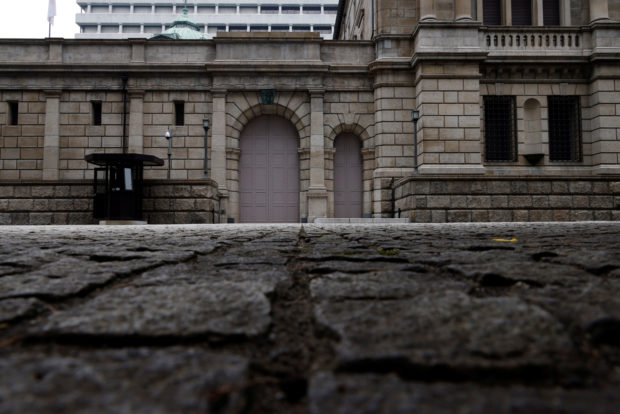BOJ keeps ultra-low rates, remains global outlier despite weak yen

Exterior of Bank of Japan’s headquarter is pictured in Tokyo, Japan, June 17, 2022. REUTERS/Kim Kyung-Hoon/File Photo
TOKYO -The Bank of Japan maintained ultra-low interest rates and dovish policy guidance on Thursday, as it seeks to reassure markets that it will continue to swim against a global tide of central banks tightening monetary policy to combat soaring inflation.
The decision came after the U.S. Federal Reserve delivered its third straight rate increase of 75 basis points on Wednesday and signaled more hikes, underscoring resolve not to let up in its battle to contain inflation.
As widely expected, the BOJ kept unchanged its -0.1 percent target for short-term interest rates, and 0 percent for the 10-year government bond yield by a unanimous vote.
The BOJ remains an outlier among a global wave of central banks withdrawing stimulus to battle soaring inflation, and will likely become the last major monetary authority in the world with a negative policy rate.
Markets had focused on whether the BOJ will show initial signs of changing the approach by tweaking its pledge to keep interest rates at “current or lower” levels, and ramp up stimulus as needed to support the economy.
BOJ Governor Haruhiko Kuroda is expected to hold a news conference to explain Thursday’s policy decision.
Japan’s core consumer inflation quickened to 2.8 percent in August, exceeding the BOJ’s 2 percent target for a fifth straight month, as price pressure from raw materials and yen falls broadened.
But Kuroda has ruled out the chance of a near-term withdrawal of stimulus on the view that wages need to rise more to sustainably achieve his 2 percent inflation target.
Kuroda’s dovish message has worked to weaken the yen, contradicting the government’s efforts to slow the currency’s decline through verbal threats of yen-buying intervention.
Once welcomed for the boost it gives to exports, a weak yen has turned into a headache for Japanese policymakers as it pushes up the cost of importing already expensive fuel and raw materials.
The world’s third largest economy expanded an annualized 3.5 percent in April-June, but its recovery has been hobbled by a resurgence in COVID-19 infections, supply constraints and rising raw material costs.